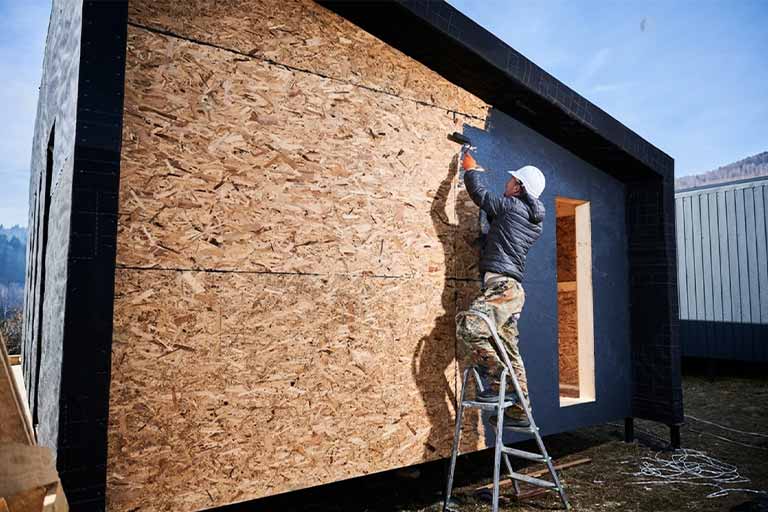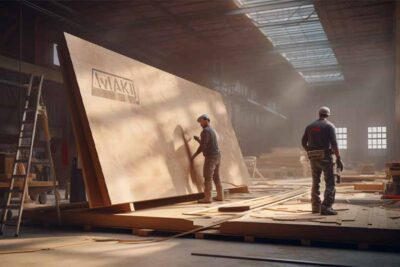
How to Paint Plywood: Tips and Tricks
How to Paint Plywood: Tips and Tricks
Plywood is a versatile material that is widely used in construction and furniture-making. Painting plywood can enhance its durability and appearance, making it suitable for various applications. However, proper preparation and technique are crucial to achieving a professional finish. In this article, we will guide you through the process of painting plywood, with tips and tricks for a successful project.
Choosing the Right Plywood
Before painting plywood, it is essential to choose the right type of plywood. There are various grades of plywood, with different levels of strength and durability. For instance, film-faced plywood is coated with a protective film that makes it resistant to water, while hexa flooring plywood has a hexagonal pattern that provides better traction. The thickness of plywood also affects its suitability for a particular application. For example, thin flexible plywood is ideal for curved surfaces, while thicker plywood is suitable for structural support. Additionally, you should inspect the plywood for surface imperfections such as knots, cracks, or warping, which can affect the paint finish.
Preparing the Plywood Surface
Proper preparation of the plywood surface is crucial to achieving a smooth and even paint finish. First, you should clean the plywood to remove any dirt, dust, or debris. You can use a damp cloth or sponge and let it dry completely before proceeding. Next, sand the plywood surface with fine-grit sandpaper to remove any roughness or unevenness. You can also use wood putty to fill any gaps, holes, or imperfections. Make sure to let the putty dry and sand it again before painting.
Priming the Plywood
Using a primer is essential for ensuring proper adhesion and durability of the paint. It also helps to seal the plywood surface and prevent stains or bleed-through. When selecting a primer, choose one that is suitable for plywood and compatible with the type of paint you plan to use. You can use a brush, roller, or spray gun to apply the primer. Make sure to apply it evenly and let it dry completely before painting.
Tips for Painting Plywood
A. Choosing the Paint
When choosing paint for plywood, consider the type of finish you want and the application of the plywood. For instance, interior plywood may require a different type of paint than exterior plywood, which is exposed to the elements. There are various types of paint finishes, including matte, gloss, satin, and semi-gloss. Choose a finish that complements your project’s style and durability requirements.
B. Tools and Materials Needed
To paint plywood, you will need some essential tools, including a paintbrush, roller, or spray gun, a paint tray, drop cloth, painter’s tape, sandpaper, and wood putty. You should also wear protective equipment such as gloves, goggles, and a respirator, especially when using spray paint. Additional materials such as a paint sprayer, a paint edger, or a paint shield can help achieve a more professional finish.
C. Painting Techniques
The technique you use to paint plywood depends on the size and shape of the surface and the type of paint you are using. Brushing and rolling are the most common methods, while spraying is faster and provides more even coverage. When painting with a brush or roller, use long, even strokes and avoid going over the same spot repeatedly, which can cause drips and unevenness. When spraying, use slow, even passes, and maintain a consistent distance from the plywood surface.
D. Dealing with Knots and Grains
Knots and grains can affect the appearance of the painted plywood, especially if they bleed through the paint. To prevent this, you can use knot sealing techniques such as applying a shellac-based primer or using a knot sealer product. Additionally, highlighting or minimizing the wood grain can create different effects on the painted surface. For instance, a smooth exterior plywood may require less grain highlighting than a patterned plywood.
E. Creating Decorative Finishes
Painting plywood can also provide an opportunity to create decorative finishes that add interest and style to your project. Stenciling and pattern options are popular decorative techniques that can be used to create geometric or organic shapes. Distressing or aging plywood can create a rustic or vintage look, while creative paint effects such as ombre or color blocking can add a modern touch.
Curing and Finishing
After painting the plywood, you should allow sufficient drying time before handling or applying additional coats. The drying time depends on the type of paint and the environmental conditions, such as temperature and humidity. Applying additional coats can improve the durability and appearance of the painted surface. Finally, you can protect the painted plywood surface with a sealant, such as a UV-coated plywood for exterior applications.
Maintenance and Care
To maintain the painted plywood surface, you should avoid using harsh chemicals or abrasive cleaners that can damage the paint. Instead, use a mild detergent and warm water to clean the surface. You can also touch up minor damages or scratches with a small brush and matching paint. Long-term care, such as regular cleaning and sealing, can extend the life of the paint and plywood.
Painting plywood can be a rewarding project that enhances the durability and appearance of the material. By choosing the right plywood, preparing the surface, using a primer, and applying the paint with proper techniques, you can achieve a professional finish. Remember to consider the type of paint, tools, and materials needed, and the decorative finishes you want to create. With these tips and tricks, you can tackle any plywood painting project and achieve stunning results.
If you have any questions about birch plywood, please contact SFK Plywood via our website or call us at {insert phone number}. We are a leading wholesale supplier of high-quality plywood, with an extensive range of grades and sizes to meet your needs. Thank you for reading our blog post, and we look forward to hearing from you.
FAQ
- Do I need to prime plywood before painting?
Yes, priming plywood is essential for ensuring proper adhesion and durability of the paint. It also helps to seal the plywood surface and prevent stains or bleed-through.
- How do you smooth paint finish on plywood?
To achieve a smooth paint finish on plywood, make sure to prepare the surface properly by cleaning, sanding, and filling any gaps or imperfections. Use a primer to ensure proper adhesion and apply the paint with even strokes or passes.
- What do you put on plywood before painting?
Before painting plywood, you should clean the surface, sand it, and fill any gaps or imperfections with wood putty. You should also use a primer to ensure proper adhesion and seal the plywood surface.
- Can I paint directly on plywood?
While it is possible to paint plywood directly, using a primer is recommended for proper adhesion and durability of the paint.






